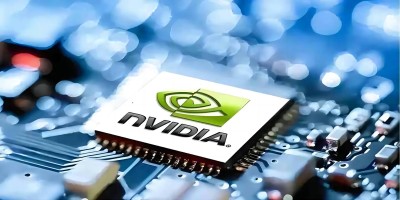Recently, the US government announced the imposition of "reciprocal tariffs" on various countries and regions, including China, which has aroused widespread global concern. In response, the Chinese government announced a series of countermeasures, including tariffs on imports from the United States.
On the 10th, Shenzhen Huaqiang Industrial Co., LTD. (hereinafter referred to as "Shenzhen Huaqiang" or the "Company") released a Voluntary Information Disclosure Announcement on the Impact of recent tariff policy changes on the Company, analyzing the impact of this tariff policy change on the company's operations from the perspective of leading authorized distribution enterprises of electronic components in China. And coping strategies for the unstable global economic and trade environment.
The immediate impact of short-term tariffs is limited
Shenzhen Huaqiang said that since the economic and trade friction in 2018, Shenzhen Huaqiang has complied with the development trend of domestic substitution, given full play to the advantages of forward-looking layout and deep cultivation in the field of local product line distribution, continued to increase the promotion of domestic semiconductor brands, and established long-term cooperative relations with the domestic head and most mainstream semiconductor original factories. Constantly promote the company's business structure optimization. At the same time, Shenzhen Huaqiang actively cooperated with and assisted the upstream and downstream to strengthen the supply chain construction and business layout in non-US regions, and reduced the impact of economic and trade frictions.
As for the additional tariffs imposed by the United States on China and China's countermeasures, the impact on the company's business is limited. On the procurement side, the company's U.S. product line accounts for a very small proportion (only 0.2%), and less than 100 of the nearly 20,000 distribution SKUs are originally produced in the United States, and most of these product lines are completed outside the United States. In terms of sales, the company's customers are mainly domestic, export business only accounts for 2% of revenue, and basically does not involve the US market, only a small number of customer business involves the US export, the company will continue to track the relevant impact.
The bigger the storm, the more critical the distributor!
In recent years, anti-globalization and economic and trade frictions have been intensifying, accelerating the deep reconstruction of the global semiconductor industrial chain and supply chain.
Shenzhen Huaqiang pointed out that as a key link of the industry, the importance of the circulation link is increasing day by day, playing an increasingly critical role in ensuring supply stability, balancing market supply and demand, and promoting industrial synergy. At the same time, the escalation of economic and trade frictions continues to disturb global economic and trade relations, tariffs and exchange rates, and increase uncertainties in the external environment. In the process of continuous restructuring of the industrial chain, if the participants in the industrial chain cannot keep up with the restructuring pace, their business development may be affected.
Coping strategy and planning
In the face of the uncertainty of the external environment, Shenzhen Huaqiang will maintain strategic focus, continue to deepen the main business, actively take measures to enhance the company's ability to resist risks and core competitiveness, and promote high-quality business and sustainable development:
1. Deepen domestic substitution: The company's local product line sales accounted for more than 60%, the future will seize the development opportunities of domestic semiconductor, and further expand the cooperation and promotion scale of domestic semiconductor brands.
2. Expand overseas layout: Focus on exploring markets outside the United States, promote internationalization by setting up branches or merging overseas counterparts, and optimize regional business structure.
3. Enhance the value of the industrial chain: Assist upstream suppliers to optimize the efficiency of the supply chain, and help downstream customers establish a diversified supply system; At the same time, explore the extension of the IDM (vertically integrated manufacturing) model to promote industrial upgrading.
* Disclaimer: This article is from the Internet, if there is any dispute, please contact customer service.



